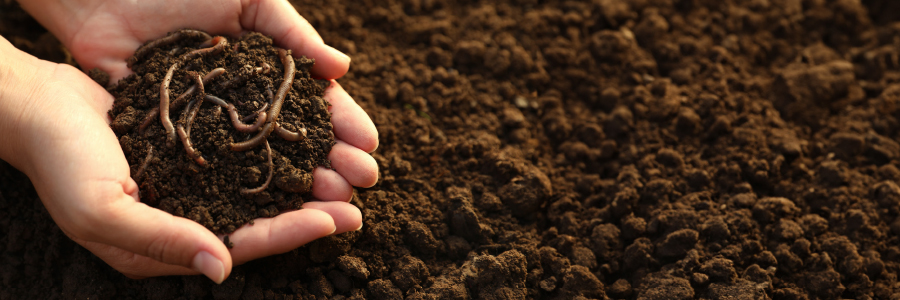


Sign-up for {N}power to get exclusive discounts, newsletters, members-only features, and more!
 Denver - Design District - Alameda and Broadway
Denver - Design District - Alameda and Broadway
368 S Broadway
Denver, CO 80209
United States
 Preferred Store:
Select a Store
Preferred Store:
Select a Store

“As engineers, we were going to be in a position to change the world – not just study it.”
— Henry Petroski
The soil beneath our feet is home to a different sort of engineer, ones that are also in the position to change the world, or put another way, to help prevent it from changing into a place inhospitable to life as we know it. They're called terrestrial invertebrates, and they're the creatures responsible for building and maintaining the infrastructure of the soil that grows our food and helps stabilize our climate. They include creatures like earthworms, ants, and centipedes. These tiny engineers form up to half of soil aggregates, the building blocks of stable soil, and they're also essential for other vital ecosystem services, including nutrient cycling, carbon transformation, and biological pest control.1 2 Yet, these diverse communities of creatures are in peril. One of the most significant and largely unexplored threats they face is the widespread use of pesticides, including insecticides, herbicides, and fungicides.3

The soil beneath our feet is home to a different sort of engineer, ones that are also in the position to change the world, or put another way, to help prevent it from changing into a place inhospitable to life as we know it. They're called terrestrial invertebrates, and they're the creatures responsible for building and maintaining the infrastructure of the soil that grows our food and helps stabilize our climate. They include creatures like earthworms, ants, and centipedes. These tiny engineers form up to half of soil aggregates, the building blocks of stable soil, and they're also essential for other vital ecosystem services, including nutrient cycling, carbon transformation, and biological pest control.1 2 Yet, these diverse communities of creatures are in peril. One of the most significant and largely unexplored threats they face is the widespread use of pesticides, including insecticides, herbicides, and fungicides.3
Globally, soil biodiversity losses are accelerating, resulting in an estimated reduction of 60 percent of the ecosystem services that soil-dwelling organisms provide. A 2019 survey by the United Nations Food and Agriculture Organization identified the overuse of chemical control mechanisms, like pesticides, as the most impactful driver of these losses over the past decade. Soil ecosystems experience pesticide pollution through various routes, including direct application and seed coatings, like those commonly employed for neonicotinoids, the most widely used class of insecticides in the world.4 Sixty percent of neonicotinoids are applied directly to the soil or as seed treatments, and these chemicals and their toxic metabolites can persist in the environment for long periods, accumulating over time.5
Now, the first comprehensive scientific review to assess the harm pesticides present to soil-dwelling invertebrates concludes that “pesticides of all types pose a clear hazard.” Published in 2021 in the journal Frontiers in Environmental Science, the review analyzed data from 394 studies assessing pesticide impacts on 275 unique species of soil invertebrates, including beetles, earthworms, ants, and ground-nesting bees. For relevance, the researchers only included non-target organisms and excluded pesticides currently banned in the United States. The result was that in 70.5 percent of cases, these chemicals caused harm to soil invertebrates, with impacts ranging from mortality to avoidance, and included disruption of reproduction, growth, feeding, and burrowing behaviors.
A big takeaway from this research is the critical need to quantify pesticide risk to soil-dwelling organisms, and the EPA does not have any such requirements. The European honeybee is the only terrestrial invertebrate the agency requires pesticide toxicity testing for, and it's an insect housed in artificial hives with neither similar behaviors nor routes of exposure compared to soil-dwelling invertebrates.
Support farming that isn’t reliant on chemical controls for starters. Organic agriculture is built on nurturing healthy soil and relies on the ecosystem services nature provides. Pest control is approached through various methods, including beneficial insects, crop rotation, and pest-resistant crop varieties. The use of organic-approved pesticides is the last resort, and the toxicity of allowed synthetic substances is thoroughly assessed and only permitted if their use is not harmful to human health or the environment.6 7 When it comes to changing the world, you see, we’re all in a position to help, starting with the food on our plates.



Sign-up for {N}power to get exclusive discounts, newsletters, members-only features, and more!
